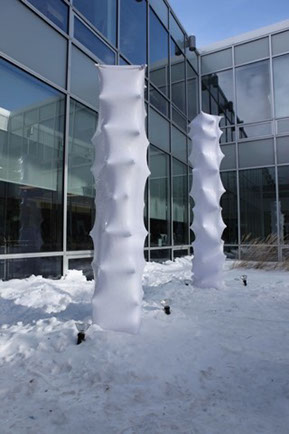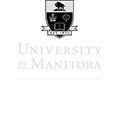
INSTALLATIONS
HOME ABOUT FABRICATIONS CALLS COMPETITIONS KEYNOTES PRESENTERS INSTALLATIONS SCHEDULE QUOTES REGISTER PRACTICALITIES
DUSTIN D. WIEBE, Research in Residence at the Centre for Architectural Structures and Technology
LAWRENCE BIRD, Winnipeg
NIKOLE BOUCHARD, University of Wisconsin
GYUNGJU CHYON & JOHN SADAR, Parsons School of Design
LANCELOT COAR, University of Manitoba
Proteus
The cell never acts; it reacts. – Ernst Haeckel
In 1899 the German biologist and artist Ernst Haeckel published his seminal text Kunstformen der Natur (“Art Forms of Nature”), in which he presented hundreds of his own etchings of newly discovered and strange microbial organisms later known as Radiolaria. These simple protozoa organism only measure between 0.1 - 0.2 mm but produce countless variations of highly complex and extraordinary geometries. The mysterious forms of these creatures are created by the growth of a flexible membrane separating the various pressures within this organism from its environment and forming a silica skeleton around these fluid-filled membranes. The results are as diverse as the make-up of the organisms and the unique sites they are formed in.
Current research by the author explores the ability of flexible membranes to produce highly complex and stable geometries using various forms of pressure and manipulation on fabric membranes and rigidifying them using various liquid-to-solid materials (ranging from plaster, to wax, to concrete, to ice). This proposal is for the production and installation of 3 – 5 fabric formed ice shell structures (ranging in size from 5’ – 10’ tall) to be built for the atmosphere conference, creating unique objects of spectacle and a demonstration of the theme fabricating in-situ by using the unique climate of our local environment in winter and the creative forces of our students to shape these structures. They will be produced in ARCH 7070, an Advanced Technology Topics course, running for the first five weeks of the winter term and ending on the week of the Atmosphere conference. The work will be designed by students and built on a site visible to the attendees of the conference, namely the JAR courtyard, allowing access to water, electricity for lighting at night, and as an accompaniment to the ice bar.
JORGE RIVERA & RYAN STEC, Carleton University
Temporal Lines - Spiraling Time in the Non-Space of VRs
MYUNG DUK CHUNG
Mediating Fabrics: Poetic Canvas
MICHAEL BUTTERWORTH

photo: Sarah Stasiuk [M2 Architecture]

The 2018 Atmosphere Symposium is co-chaired by: Lisa Landrum and Liane Veness with the support of the Faculty's Cultural Events Committee and the Centre for Architectural Structure and Technology (C.A.S.T.); web design and graphics support by Tali Budman (ED4 Architecture student), and administrative support from Brandy O’Reilly (Faculty of Architecture, Partners Program).
Questions? Please contact info@atmos.ca